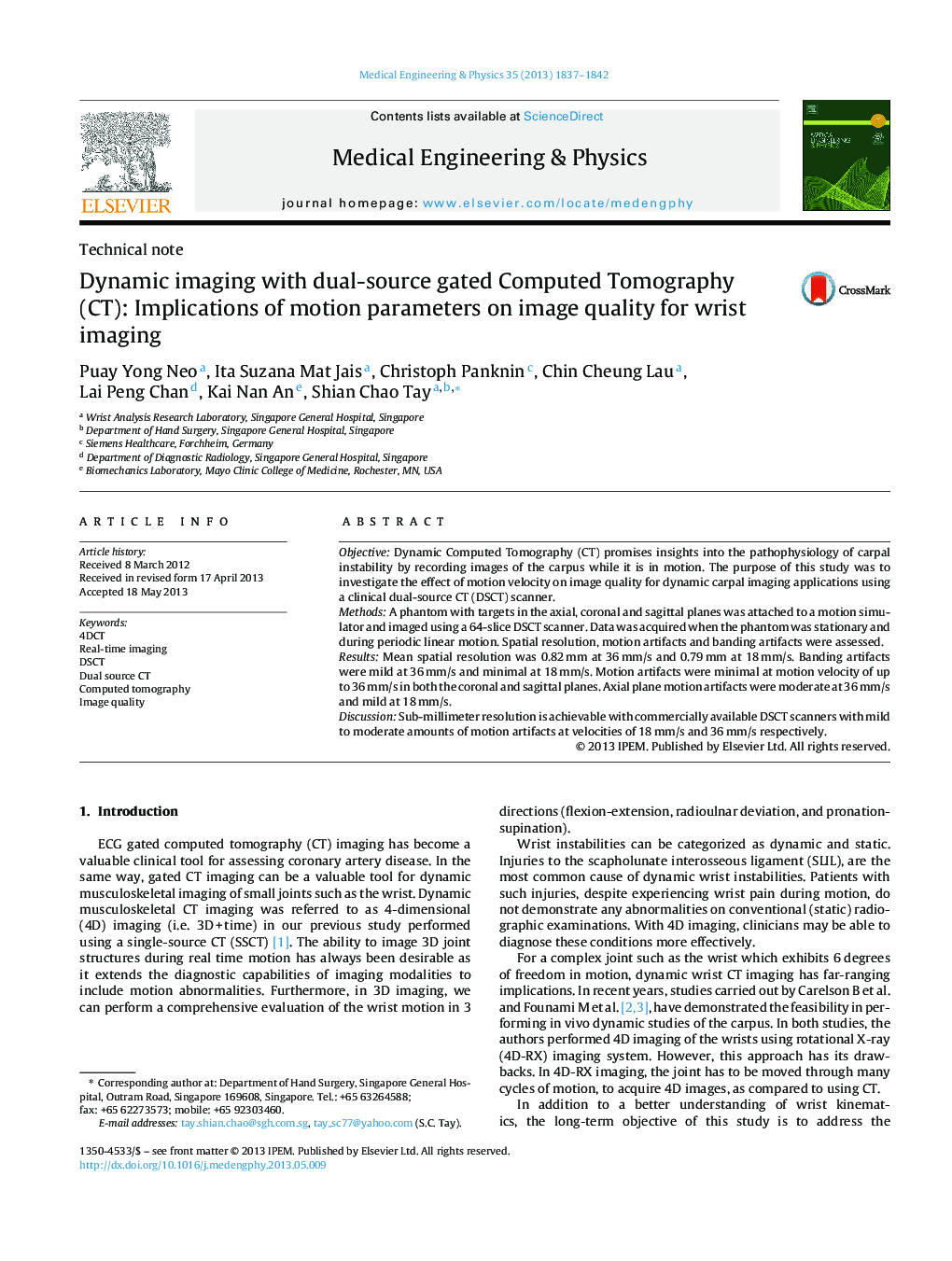| Article ID | Journal | Published Year | Pages | File Type |
|---|---|---|---|---|
| 876101 | Medical Engineering & Physics | 2013 | 6 Pages |
ObjectiveDynamic Computed Tomography (CT) promises insights into the pathophysiology of carpal instability by recording images of the carpus while it is in motion. The purpose of this study was to investigate the effect of motion velocity on image quality for dynamic carpal imaging applications using a clinical dual-source CT (DSCT) scanner.MethodsA phantom with targets in the axial, coronal and sagittal planes was attached to a motion simulator and imaged using a 64-slice DSCT scanner. Data was acquired when the phantom was stationary and during periodic linear motion. Spatial resolution, motion artifacts and banding artifacts were assessed.ResultsMean spatial resolution was 0.82 mm at 36 mm/s and 0.79 mm at 18 mm/s. Banding artifacts were mild at 36 mm/s and minimal at 18 mm/s. Motion artifacts were minimal at motion velocity of up to 36 mm/s in both the coronal and sagittal planes. Axial plane motion artifacts were moderate at 36 mm/s and mild at 18 mm/s.DiscussionSub-millimeter resolution is achievable with commercially available DSCT scanners with mild to moderate amounts of motion artifacts at velocities of 18 mm/s and 36 mm/s respectively.
